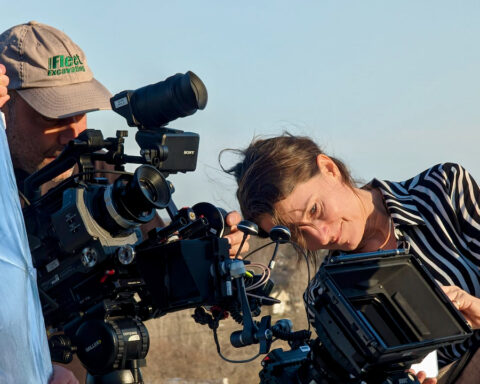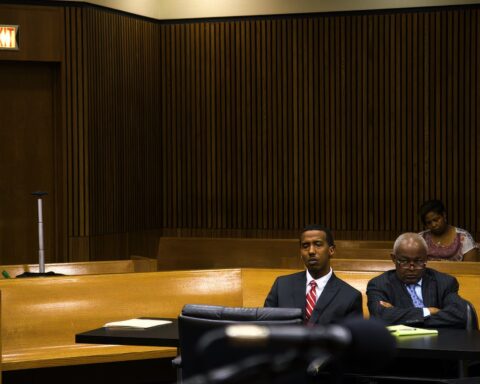The draft bill to amend Canada’s copyright legislation tabled by the federal government on June 2nd is an attempt to bring Canada into the modern era. It seeks to address digital issues that we were unable to cover with the last amendment in 1997. It is intended to ratify and implement the international treaties Canada signed at the World Intellectual Property Organization (WIPO) in the late ’90s. The preamble to the draft bill contains admirable objectives:
• To create a marketplace framework law and cultural policy instrument that through clear, predictable and fair rules will support creativity and innovation in the knowledge economy;
• To address opportunities and challenges that are global in scope for the creation and use of copyright works or other subject matter;
• To adopt coordinated approaches to copyright protection based on internationally recognized norms [including those reflected in the aforementioned WIPO treaties];
• To provide rights holders with recognition, remuneration and the ability to assert their rights;
• To enhance users’ access to copyright works or other subject matter; and
• To enhance the protection of copyright works through the recognition of technological measures and other measures, in a manner that promotes culture and innovation, competition and investment in the Canadian economy.
Sounds pretty good, doesn’t it? Fair and balanced. The problem is, the bill fails to meet most if not all of these goals in the drafting.
Why Media Producers Should Care
For at least a decade, successive federal politicians have been drinking the Kool-Aid of the hype around new media. The fact that large interests in traditional media, newspapers, movies and broadcasting and book and magazine publishing are still driving the process doesn’t seem to matter. Everybody wants ‘in’ to the digital economy.
To be fair, writing balanced copyright law is a complex challenge. Industries migrating to digital distribution are in a constant state of flux. But Bill C-32 as written seems to be based on the old model, where the value of a given work is measured only at the consumers’ end of the creative food chain.
When consumption is digital, this draft suggests that once you acquire the work you can do whatever you want with it. The principle of compensation for use is missing. Now that works are not embodied as physical objects, we are in danger of destroying the economic incentive for creating them in the first place.
And that affects every filmmaker, every musician, every photographer—every artist—in Canada.
Modern copyright was invented in the late 19th century. Its champions were Victor Hugo, Charles Dickens and Edgar Allan Poe. The movement was spurred on by the outright theft of their works (and everyone else’s) by the burgeoning market that was the United States of America, where anyone with a printing press could reproduce and sell anything they could get their hands on. The current state of affairs, where technology has supposedly trumped the law, may prove an ironic analogy to that first century and a half of rustling artists’ economic rights in the USA. It is also ironic that the U.S. is now seen as the locus of power that challenges the copy-lefters’ creed: “information wants to be free.” In fact, the approach to the valuation of original works that pertains in continental Europe (where the term to describe the legal concept is droits d’auteur) provides much greater protection to the creators and interpreters whose work constitutes modern cultural production.
Enough history. Let’s look at the political realities faced by those of us who do our work in the hope and expectation that it won’t be (further) devalued by this bill, were it to be passed into law as drafted.
“Copyleft”
Professor Michael Geist (Canada Research Chair in E-commerce at Ottawa U) is the defacto leader of the copyleft movement in Canada and takes after his U.S. counterpart, the self-styled guru Lawrence Lessig. These fellows always pay lip service to the idea that creative works need to be compensated but when we get down to the short strokes, they reject any practical proposals to ensure a secure marketplace. The (mostly) 20-somethings who have been enlisted by Geist for his ongoing crusade for consumers have embraced the shibboleth that protecting the individual expression of ideas (as opposed to “information,” dear professors) has become archaic with the advent of digital distribution. This faction is spurred on by choosing easy targets (the Hollywood majors, the big record labels) to demonize copyright itself as an idea.
Copylefters raised the loudest objections when the bill was introduced. They see the recognition of locks and rights management information as a betrayal. They have been led to expect a new Eden, where every piece of information is immediately available and shouldn’t cost more than their monthly ISP (Internet Service Provider) bill. Though the proposed legislation contains measures that enable the breaking of digital locks for “non-commercial” infringement, apparently it doesn’t go far enough for those who have been encouraged to believe that their acquisition of the latest gadget should allow them free and untrammelled access to anything they can find on the internet.
Now, I don’t want to suggest that the law should preserve current business models for the distribution of films, books, magazines, etc. as tangible objects. The problem is that in trying to reconcile the relatively recent concept of “users’ rights” with the inherent principle of acknowledging the rights of creators and their distribution partners to fair compensation, C-32 fails to assess the value of the markets for secondary uses of copyright materials. Private copying, educational uses, format shifting and mash-ups that enable the use of an entire original work for non-commercial purposes are permitted without compensation. These markets are growing exponentially through social networking sites that are not, in fact, non-commercial at all.
It can be argued that the industries many of us work in, broadcasting, sound recording and print publishing, have brought this grief on ourselves. We have been slow to adapt to the realities of digital distribution. The music industry tried to maintain its inflated prices and lock down everything. Newspapers went online for free and now they find that a dollar in advertising on dead trees is only worth a dime on the Internet. The machinations of the broadcasting industry trying to maintain their model online are all too familiar to POV readers and is another case where it may be argued that the traditional business model doesn’t fairly reward the creative community. In the realm of new media, only the gaming industry got off the blocks with an airtight model, but it was based on proprietary technology and that’s fading as pirates get better at plying their trade and gamers are increasingly playing online.
Copyright
There is certainly no objection from the creators’ side to the introduction of excep- tions for parody and satire alongside the existing provisions for criticism and private study. Indeed, for readers of this magazine they represent a step forward and bring us in line with most of the developed world. Combined with the legal defence against libel on the basis of “public comment” in a Supreme Court decision promulgated in December 2009, they should have a positive effect on the climate for social criticism in all its forms, at least for the purposes of legal protection from harassment.
But the proposed broad exception for education is very problematic. It needs to be balanced by enshrining existing markets and licences as a counterbalance. The bill as proposed endangers an important principle—compensation for use—and weakens our ability to apply practical means of upholding it.
The current marketplace for copying works for educational purposes is subject to licencing through various collectives (Access Copyright, SOCAN, Copibec, etc.) under the authority of that uniquely Canadian institution, the Copyright Board. It is hard to imagine any practical way of compensating these rights except collectively. Yet this putative education exception and related technical clauses in C-32 eviscerate the legal basis on which these not-for-profit bodies operate. For example, for the 6,000-plus writers, photographers and visual artists and their publishers who are affiliated with Access Copyright, the draft bill threatens up to $30 million in annual revenue that is collected and distributed to rights holders. While no one is paying off their mortgage and putting food on the table from this source alone, it does represent more than a symbolic recognition that our works have value beyond their original publication.
Confusion
The fundamental process of making new copyright law in Canada is always subject to an extra tension because there are two federal ministries in charge, Heritage and Industry. Popular wisdom holds that Industry carries a brief for consumers while Heritage reps rights holders. This is grossly general. Large industries such as U.S. movies and music, and foreign and domestic media companies have enough hired clout in Ottawa to cover both bases.
Domestic cultural industries like film, television and book and magazine publishing have a home at Heritage, as do the professions that support them. The creative community has to straddle the cultural industries and arts shops at Heritage and there is another layer of divergence there that is reflected within the NGO community of professional associations and unions.
The tendency to demonize the other side of the real and imagined bargaining tables within arts and culture enterprises in Canada works against the development of common positions. When you add these internal divisions among rights holders to the knee-jerk pro-consumer response of all three federalist parties, it’s not a pretty picture. For those who would see a law that gives fair value to creators and producers in exchange for the increased access to cultural expression that we all favour, C-32 is not acceptable in its draft form.
Because the current economic models of the various industries that deal in copyright materials differ widely, so do their interests in the draft bill. Photographers get a long-sought initial right, which is a good first step for them. Performers’ rights contained in the WIPO treaties get the nod. Music and sound recording have a strong interest in extending the private copying levy beyond tape and disc to the multi-media devices that are supplanting physical copying. That’s not in C-32 and they are pushing hard to get it in. Visual artists want a resale right whereby a royalty would accrue to the individual when their work changes hands. This seems like simple justice, especially when you consider that, for example, a painter’s early work often increases greatly in value as their career progresses, but it is also missing from the bill. Those who seek these measures only have until second reading to get them in. They certainly have their work cut out for them.
The writing and publishing community is more concerned about getting something rebalanced within the draft bill: the broad exception for education that will grievously harm not-for-profit collectives, publishers and individual creators. Then there is the aforementioned new provision for non-commercial user-generated works (known as the mash-up or YouTube clause) that has potential to permit broad exploitation of everyone’s works. Locks (DRMs and TPMs) are respected, but breaking them for non-infringing purposes is allowed. But remember that infringement only exists when proven in court. The bill as drafted puts a greater burden of proof on the rights holder while it reduces the penalty for common infringement so that infringement becomes quite manageable, a cost of doing business. At least one analyst sees the anti-piracy provisions as actually making that activity easier to accomplish. In other words, it’s a messy draft.
Hope?
The one hopeful sign in this inevitably difficult process is that James Moore, the minister of Canadian Heritage, indicated soon after the bill was tabled that he is open to improving it by amendment. It’s up to all interested parties to enter the political process and inject some balance.











